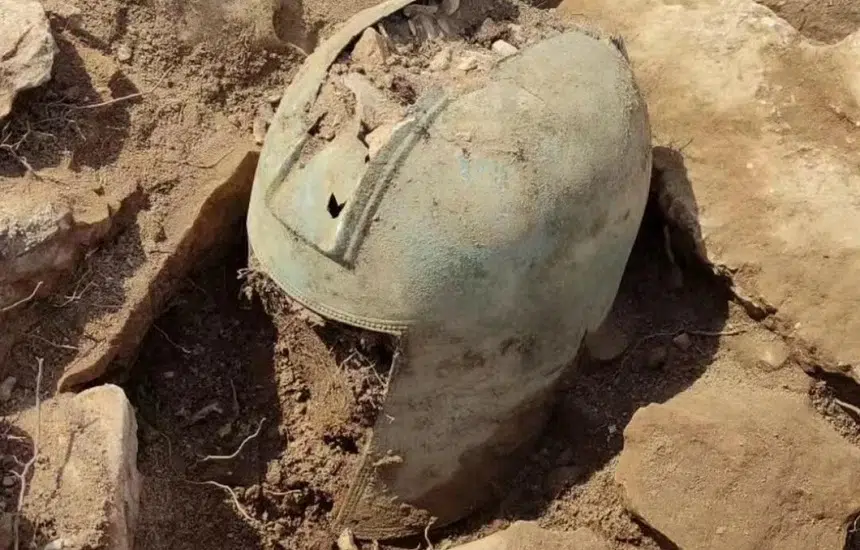
Archaeologists discovered a Greek-Illyrian helmet dating 2,500 years in very good condition on Croatia’s Pelješac peninsula.
The same team that found the Greek-Ilyrian helmet in 2020, in the same place, has found the next helmet, which according to the first analysis is older than the one found earlier.
The previous example most likely belonged to a member of the warrior elite who was interred there because it was discovered in a grave with pieces of iron weapons.
Archaeologists think the recently discovered helmet may have been a votive deposit because it was discovered in a dry stone-walled addition to a grave.
Greco-Illyrian type helmets originated in Peloponnese, Ancient Greece, where it likely evolved from the Kegelhelm (or Kegel type) of the Archaic Period.
The Greek-Illyrian helmet is extremely rare
Both of the helmets found are of different types and dates: The helmet discovered in 2020 was of a type commonly used in Greece and Illyria in the 4th century BC. It was an open-faced helmet with a rectangular cross-section for the face and decorative edges.
The newly found helmet is thought to date from the 6th century BC and is extremely rare. Finding two different Greek-Illyrian helmets at one site is unprecedented.
This find, along with a wealth of clothing, jewelry, and burial artifacts unearthed since the excavations began, greatly expands our knowledge of the funeral practices of Illyrian communities in the latter half of the first millennium BC.
The Illyrians were a group of Indo-European-speaking people who inhabited the western Balkan Peninsula in ancient times. They constituted one of the three main Paleo-Balkan populations, along with the Thracians and Greeks.
“What is very interesting is that two different types appear here in the same place, which speaks of a continuity of power of the respective community. These helmets have always been a symbol of some kind of status and power,” said Professor Hrvoje Potrebica, from the Department of Archeology of the Faculty of Philosophy in Zagreb.
Speaking on the discovery, a representative from the Dubrovnik Museum told HeritageDaily: “Along with numerous finds of jewelry, costumes and grave goods, this find of a helmet contributes in many ways to the knowledge of funeral rituals of Illyrian communities in the second half of the last millennium BC, and it ranks the area of Pelješac as one of the most important archaeological zones of the eastern Adriatic coast.”
Recently, archaeologists in Southern Italy have unearthed several significant artifacts, including two helmets, fragments of weapons and armor, and pottery shards, at an archaeological site in the ancient Greek city of Velia.
Related: Ancient Greek Helmets: The Good, the Bad, and the Ugly
See all the latest news from Greece and the world at Greekreporter.com. Contact our newsroom to report an update or send your story, photos and videos. Follow GR on Google News and subscribe here to our daily email!



